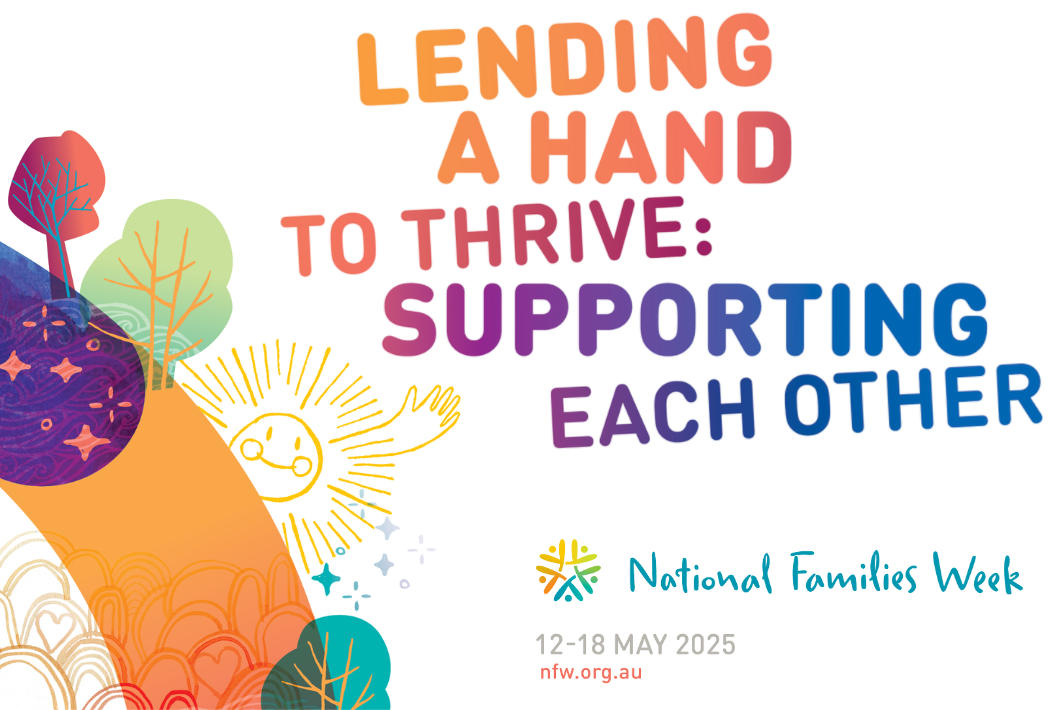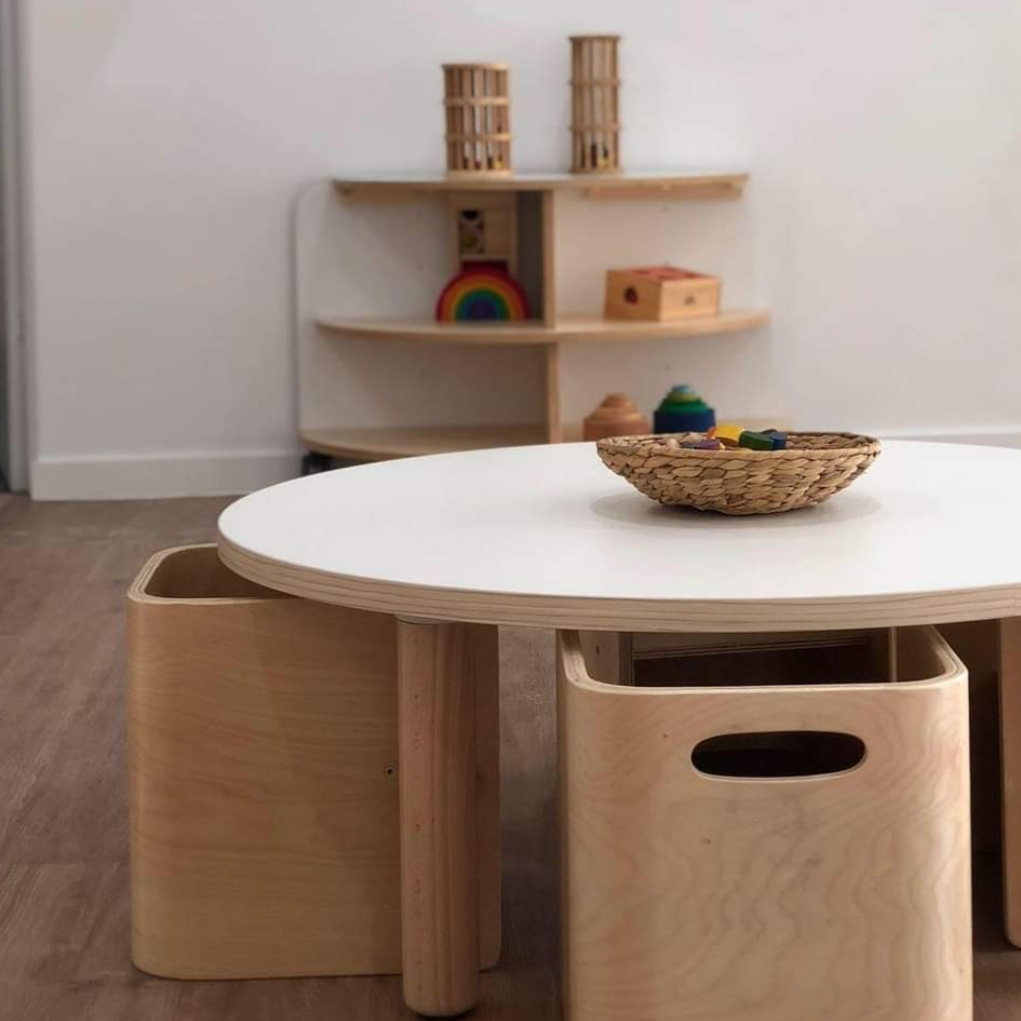
Lending a Hand to Thrive: Supporting Each Other
National Families Week is 12-18 May, and what better way to celebrate the vital role that families play in our lives
than by embracing this year’s theme: “Lending a Hand to Thrive: Supporting Each Other.”
Families are the first and most influential teachers in a child’s life. They provide love, care, and guidance, helping children grow and develop the skills they need to succeed. In early education, we have the unique opportunity to help children understand and appreciate the value of their families and how these relationships contribute to their well-being.
Creating a home-like environment in early learning centres is important in helping children feel supported and secure. A classroom that feels like home nurtures emotional well-being, encourages exploration, and fosters a deep sense of trust and connection. When children feel comfortable and valued in their learning environment, they are more likely to thrive and develop the social, emotional, and cognitive skills they need to succeed.
Incorporating family-centred activities into the classroom can also create an environment where children learn to recognise the positive impact of family support. By involving the children in hands-on activities, we can celebrate National Families Week in meaningful ways, promoting a sense of community and highlighting how families help each other thrive.
Family Tree Craft: Understanding our “Roots”
Family tree craft isn’t just about art; it’s about building connections, understanding where we come from, and appreciating the people who help us grow. It’s also a great conversation starter for the whole class to share stories about the important people in their lives!
What you will need: Construction paper (green for leaves, brown for tree trunk), family photos (optional), glue or tape and crayons, markers, or paint.
Instructions:
- Start by helping each child cut out a tree trunk from brown construction paper and glue it onto a large sheet of paper.
- Have children cut out leaves from green paper, and either write the names of their family members or draw pictures of them on each leaf.
- Encourage children to glue their leaves around the trunk to form their family tree. If available, you can add family photos to the leaves or around the tree.
- Discuss with children the different roles family members play in their lives and how they help them grow.
“Helping Hands” Art: Together We Thrive
One of the best ways to illustrate the theme of “Lending a Hand” is through a collaborative art project; inviting children to contribute their handprints to a larger piece of artwork that represents the strength of supporting each other. This is a beautiful way to show idea that families (and communities) support one another to create something greater.
What you will need: Large sheet of butcher paper or poster board, markers, crayons, or paint, construction paper for handprints, scissors and glue.
Instructions:
- Have each child trace their hand on a piece of construction paper and cut it out.
- Encourage them to decorate their handprints with words or drawings that represent their family or how they help others.
- Once the handprints are ready, children can glue them onto the butcher paper, creating a collective mural.
- Discuss how the hands represent the different ways families come together to support one another, and how working as a team helps everyone thrive.
Circle Time: Sharing Our Family Support Stories
Circle time is a great opportunity to foster communication and deepen the sense of community among children. Use this time to discuss the importance of family support, and how families help one another thrive. By giving children the opportunity to share stories about their families, they can better understand the roles families play in their lives.
What you will need: A soft ball or plush toy for passing around
Instructions:
- Gather the children in a circle and introduce the theme of family support. Ask open-ended questions like:
- “How does your family help you when you’re feeling sad?”
- “What’s something special your family does for you?”
- “How does your family make sure you’re safe and happy?”
- Pass the ball or plush toy around the circle, and each time a child catches it, they share a story or experience about their family.
- Encourage children to listen actively and support each other as they share, reinforcing the idea that families are there to help us thrive.
“Thank You” Notes to Families
Encouraging children to show gratitude for the support they receive from their families’ nurtures appreciation and emotional awareness. A ‘thank you’ card activity allows children to express their feelings and share their appreciation in a tangible way.
What you will need: Blank cards or paper, crayons, markers or stickers.
Instructions:
- Provide each child with a blank card or piece of paper.
- Encourage them to create a thank you card for their family, drawing pictures or writing messages about how their family helps them and what they love about their family.
- Children can decorate their cards with stickers or designs that make them personal and meaningful.
- Send these cards home so children can present them to their families as a gesture of love and appreciation.
Family Picnic: Bring Families Together
A family picnic or potluck offers an opportunity for families to connect outside of the classroom while enjoying food and activities. It’s a great way to celebrate the support families provide and encourage a sense of community among the children and their families.
Instructions:
- Plan a family picnic day at the centre or a nearby park. Invite families to bring their favourite snacks (or provide them at a small cost) and spend quality time together enjoying food, games, and activities.
- Set up picnic blankets, tables, or a cozy outdoor space where families can relax, enjoy each other’s company, and share stories.
Celebrating Families: The Heart of Learning
National Families Week provides an incredible opportunity to reflect on and celebrate the role families play in the lives of children. Through activities that focus on family identity, gratitude, and mutual support, we can help children appreciate the strong, loving foundations that their families provide.
By engaging in these activities, educators can encourage children to recognise the value of family support, understand their place within their family unit, and develop emotional skills that will help them thrive both at home and in the classroom.
Let’s celebrate the families who help children grow and thrive, because when families are strong, everyone thrives!
GET INVOLVED IN NATIONAL FAMILIES WEEK
USEFUL RESOURCES FOR NATIONAL FAMILIES WEEK
Tags: learning activities, play-based learning, transition to school












